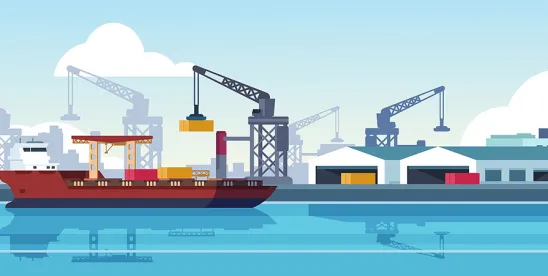The Shipbuilding and Harbor Infrastructure for Prosperity and Security for America Act (SHIPS for America Act) that was originally introduced in Congress in 2024 has been reintroduced in the Senate of the 119th Congress as S. 1541, with Sens. Mark Kelly, D‑Ariz., Todd Young, R-Ind., Lisa Murkowski, R-Alaska, Tammy Baldwin, D-Wis., Rick Scott, R-Fla., and John Fetterman, D-Pa., as its cosponsors. Sens. Richard Blumenthal, D-Conn., and Dan Sullivan, R-Alaska, subsequently joined as cosponsors as well. The bill has been initially referred to the Senate Committee on Commerce, Science, and Transportation.
A companion bill of the same name has been introduced as H.R. 3151 in the House of Representatives by Rep. Trent Kelly, R-Miss., on behalf of himself and 37 cosponsors — 21 Republicans and 16 Democrats. The House bill was referred to 12 different committees for consideration within their respective subject matter jurisdictions.
The numerous House committees to which the bill has been referred reflects the comprehensive scope of the bill’s proposals for revitalizing the United States as a maritime nation. While the SHIPS for America Act contains many specific legislative proposals, the principal policy objective of the SHIPS for America Act is to enhance US national security by increasing the involvement of US-built, US-flag vessels in international trade and in particular to compete with China more strategically in that trade. The provisions of the SHIPS for America Act are designed to achieve this overall policy objective in several ways.
First, the SHIPS for America Act contains provisions to establish national oversight and consistent funding for the US maritime industry. If passed, the SHIPS for America Act would create a White House-level position of Maritime Security Advisor, who in turn would lead an interagency Maritime Security Board tasked with making whole-of-government decisions to implement a national maritime strategy.
The SHIPS for America Act would also establish a Maritime Security Trust Fund similar to the dedicated trust funds for other modes of transportation that are supported by user fees, such as the Highway Trust Fund. The purpose of the Maritime Security Trust Fund would be to provide funding for federal programs that support US maritime transportation independent of the annual appropriations process, funded by duties, fees, penalties, taxes, and tariffs collected by US Customs and Border Protection.
To increase the number of US‑built, US-flag vessels engaged in international trade, the SHIPS for America Act would create a new program, the Strategic Commercial Fleet Program, with the goal of establishing a fleet of 250 privately owned US-built, US-flag, US-crewed vessels in international trade by 2030 that are also capable of serving national defense interests. The program would provide annual support payments to cover the difference in capital costs and operating costs associated with constructing and operating a US-built, US-flag vessel as compared with a fair and reasonable estimate of the costs of constructing and operating that type of vessel in a foreign shipyard or under a foreign flag.
The SHIPS for America Act would also establish a shipbuilding financial incentive program that allows the US Maritime Administration (MARAD) to aid in the construction of US-built, US-flag vessels that are not part of the Strategic Commercial Fleet, or to make investments in US shipyards and facilities that produce critical components for shipyards. The SHIPS for America Act would also make changes to MARAD’s Title XI, Capital Reserve Fund, Capital Construction Fund, and Small Shipyards Grants programs designed to encourage the construction of new vessels.
An investment tax credit of 33% would be available for investments to construct, repower, or reconstruct eligible oceangoing vessels in the United States and a 25% investment tax credit for investments in a qualified shipyard in the United States.
The SHIPS for America Act includes several provisions designed to help ensure that there will be cargo for the new vessels to carry. Among them would be an increase in the percentage of US government cargo required to be carried on US-flag vessels from 50% to 100%. Within 15 years, 10% of all cargo imported from the People’s Republic of China would be required to be carried on US-flag vessels. US-built vessels would be required to carry 10% of total seaborne crude oil exports by 2035 and 15% of total seaborne liquefied natural gas exports by 2043.
Finally, the SHIPS for America Act addresses the need for a sufficient shipyard workforce to build these new vessels and for enough mariners to crew them once they are built. Incentives for recruiting and retaining mariners and shipyard workers would include public service loan forgiveness, educational assistance under the GI Bill, and preference when applying for federal employment.
There has been commentary suggesting that some of the different ways in which the SHIPS for America Act seeks to achieve its policy objectives — direct financial support, investment tax credits, cargo preference, and workforce development, among others — could eventually be incorporated into separate bills in order to facilitate their consideration and passage. The projected costs of each of the various incentives will need to be tallied, and funding for them will need to be provided. In any event, the renewed recognition of maritime transportation’s vital role in our nation’s security is likely to provide favorable prospects for the SHIPS for America Act and similar legislative initiatives.




 />i
/>i
